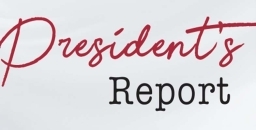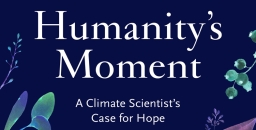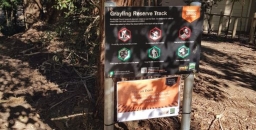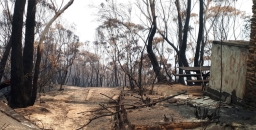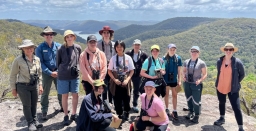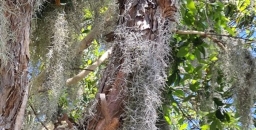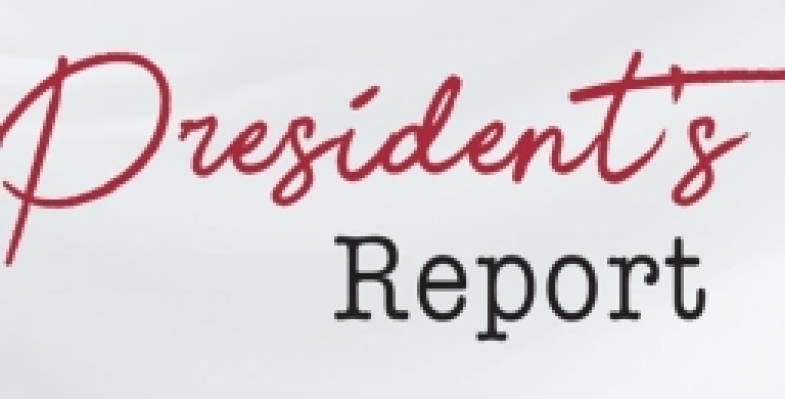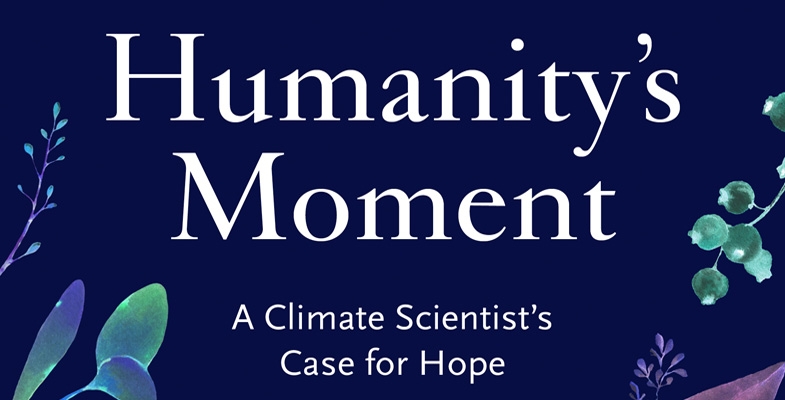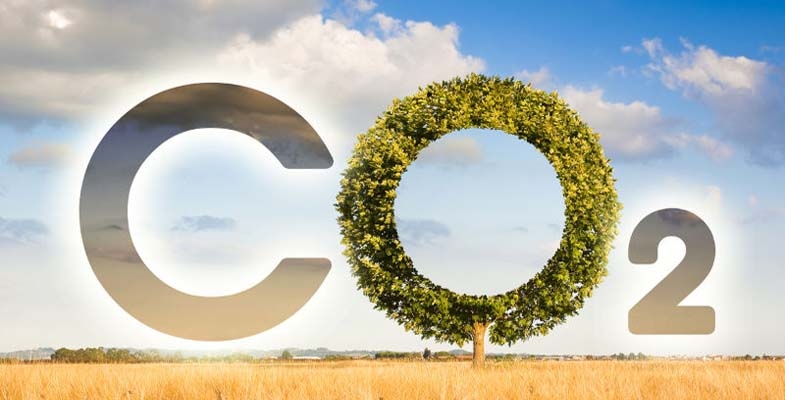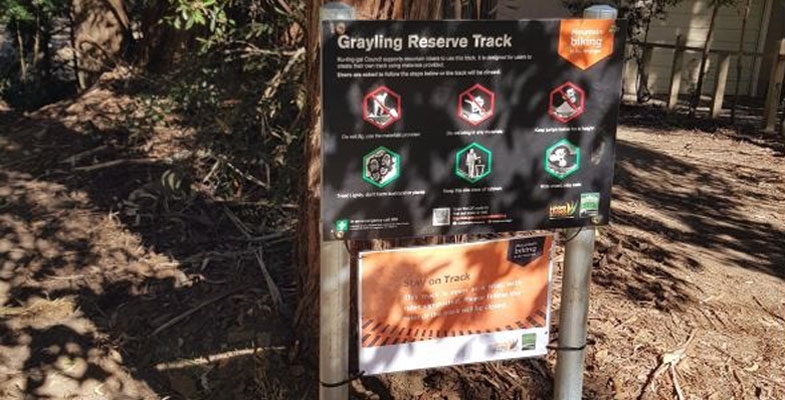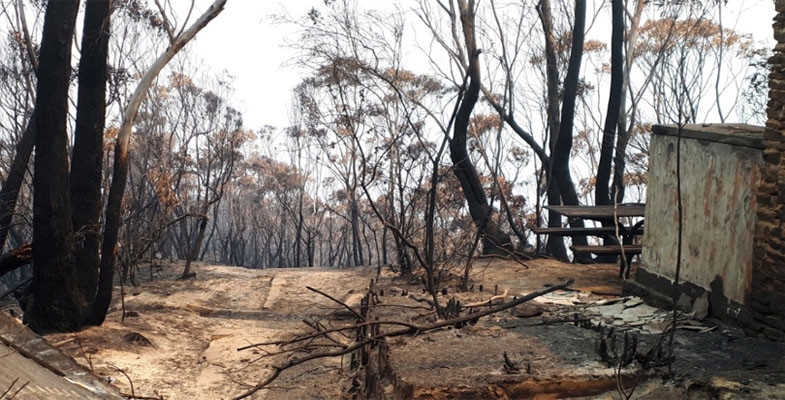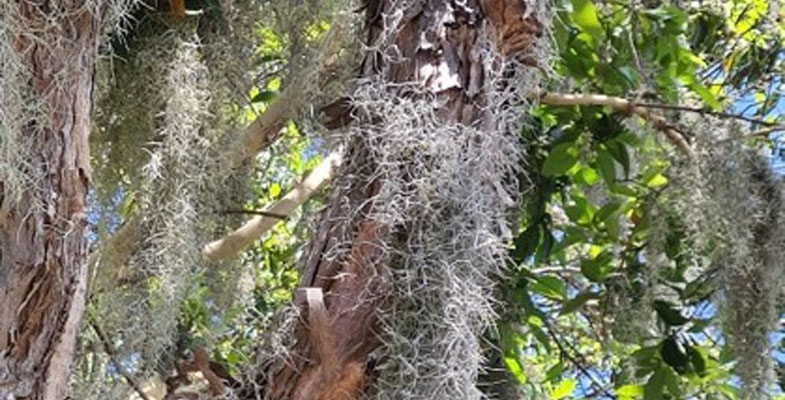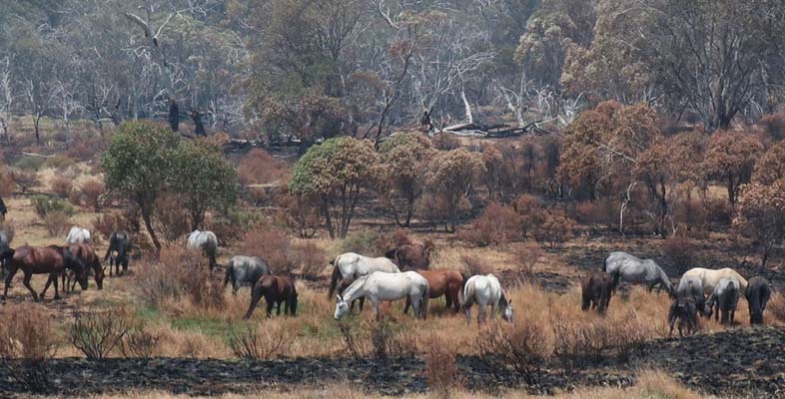STEP Matters 223
- Default
- Title
- Date
- Random
- Welcome to the annual report on the 45th year of operation of STEP Inc. There is a brighter outlook for…Read More
- Those of you who attended Ian Dunlop's STEP AGM talk on 4 November may have ended up distressed by the…Read More
- At our AGM on 4 November, Ian provided a clear message about the future of the Earth and humankind. He…Read More
- Grayling Reserve is a small area on the corner of Grayling Street and Binalong Street in West Pymble. It covers…Read More
- Our Black Summer fires were closely followed by record rainfall and flooding. We were actually up in the Blue Mountains…Read More
- ‘What an amazing opportunity …’ was a student response overheard during a lunch conversation at the recent biodiversity survey held at…Read More
- Would you like to take part in our citizen science project? STEP is becoming increasingly concerned about the potential impact…Read More
- Two threatened species, the Eastern Pygmy Possum and the Red-crowned Toadlet, are both listed as Vulnerable under the NSW Biodiversity…Read More
- In the previous edition of STEP Matters there was an article about the NSW government’s proposal and consultation on reinstating…Read More
- STEP has given a prize for environmental projects in the Science Teachers Association of NSW Young Scientists Awards for 22…Read More
- The Upper House of the NSW parliament has been conducting an inquiry into how the planning system can be improved…Read More
Annual report 2023
Welcome to the annual report on the 45th year of operation of STEP Inc. There is a brighter outlook for the environment in 2023 following the election of the Minns Labor government. But we have to be vigilant in advocating for stronger action.
The report on the NSW Review of the Biodiversity Conservation Act was scathing about the loss of biodiversity over the past
5 years that was supposed to be conserved under this Act. Strong action is required in implementing the recommendations. The same applies at the federal level as we await release of the revision of the EPBC Act.
A change of attitude towards coal and gas mining, native forestry and land clearing is vital for progress on climate change and loss of biodiversity.
Activities
Talks
Our post AGM talk in 2022 was given by Professor Michelle Leishman on creating resilient urban green spaces in the face of climate change.
So far in 2023 we have held talks on the aboriginal heritage of the Ku-ring-gai GeoRegion, Powerful Owls and the future approaches to bushland management in Hornsby Shire. We will be hearing about Ku-ring-gai bushland management in a talk by Jacob Sife on 25 November.
Walks
We scheduled 7 walks that featured national parks and the variety of vegetation that is a feature of northern Sydney bushland. John Martyn also introduced us to new reserves in outer Sydney; well worth a visit. With the period of hot weather lengthening we are reluctant to schedule walks during the November to February period. We thank our volunteer leaders, David Roberts, John Martyn, Helen Logie and Mark Schuster who shared their local knowledge and Beverley Gwatkin who has organised these walks.
Publications
We are still offering a year’s free membership to anyone who buys a book or map. Sales of our maps is still strong and there is a steady demand for our books.
We printed an updated version of the Middle Harbour North map. There is still a demand for paper maps that give a big picture for planning of potential walk itineraries.
Committee
The STEP committee has, as always, been a great group of people to work with. We owe a huge thank you for all their efforts.
We thank Jim Wells for keeping track of our finances and compiling monthly finance reports. Trish Lynch continues to keep Facebook up to date and find news of local activities and wildlife discoveries. We have closed down our Twitter account because the decline in its popularity. John Burke did a great job of highlighting environmental issues while Twitter was a strong source of commentary.
There have been several issues to review this year, often this is in association with other groups such as the Natural Turf Alliance. The committee members work well together in organising activities, responding to questions from the public and, writing submissions.
Newsletter
We are continuing to publish five issues of the newsletter each year. We have ceased providing hard copies of STEP Matters with members receiving a pdf version via email. Links to individual topics are also included in the email and are on our website so anyone can pick out particular articles of interest. These articles also have links to previous articles on related topics and all our past newsletters are on our website.
While the newsletter concentrates on local issues and events we also cover broader national environmental issues that affect us all. We aim to be educational but not too technical. I hope they are of interest, but feedback is welcome. Also, contributions from members about local events and developments can be published in the newsletter or on Facebook. If you have read a book that you think will be of particular interest to our members, please send us a review.
Accounts
The net cash balance at the end of the financial year reduced compared to last year because we awarded three research grants (see more detail below).
The Environment Protection Fund (EPF) balance is on-hold in case a major issue arises. We need to maintain this separate fund that is part of our deductible donation status. The fund’s purpose is to support our environmental objectives. We received a total of $365 in donations in the past financial year.
Our general fund can be used to support educational projects as well as the EPF. We are keen to support more environmental projects so please contact us if you have any ideas.
Again we thank Allan Donald, chartered accountant for his completion of the audit on a pro bono basis.
Education and research grants
The John Martyn Research Grant supports student research in an area relating to the conservation of bushland. The grant for 2023 was awarded to Margarita Gil-Fernandez to support her research on anthropogenic disturbance and its impact on mycorrhizal fungal diversity.
STEP will also award an ad hoc research grant for worthwhile projects. Vanessa McPherson and Michael Gillings gave a talk to members last year about their research into coral fungi that has ramifications for improving strategies for bushland restoration. We awarded a grant to Vanessa that will help progress her research.
For many years STEP has been donating a prize in the Young Scientist Awards run by the NSW Science Teachers Association. The selection of a winning project out of a wide range of ecological issues is an interesting exercise. We are still judging this year’s entries with help from Syd Smith and Gaye Braiding.
Advocacy
Synthetic turf and the Westleigh Park development with its extensive ‘unsanctioned’ mountain bike trails in endangered turpentine forest were again our main areas of attention. It is concerning that the current government sports grant system is facilitating the installation of synthetic turf instead of improving natural grass with the result that the field is effectively no longer a space for community use and other sports. The Chief Scientist’s report on synthetic turf highlighted the environmental harm and potential risks health from the use of this product. STEP, as part of the Natural Turf Alliance, is calling for a moratorium on its installation and awarding of grants until guidelines are issued by the NSW government and further research can be carried out.
There were many issues with the approval process carried out by Ku-ring-gai Council in relation to the synthetic turf at Norman Griffiths Oval but its installation is proceeding.
We made submissions on the major Hornsby Council development plans at the quarry and Westleigh that currently do not provide protection for this high quality bushland.
Submissions were made on some Ku-ring-gai Council plans of management and the Urban Forest Strategy.
The Mirvac development at West Pennant Hills continues to need scrutiny and submissions. There are still concerns about excessive development plans at North Turramurra Recreation Area, Lourdes and Eden Gardens that have not been resolved.
Conclusion
A community group like STEP works best with many lines of communication. We enjoy a good relationship with other community groups and local council staff. Information sharing is an important part of our work. To that end we appreciate feedback from our members and reports on local issues that we may not be aware of. It is becoming harder to keep track of local developments as the local newspapers have shrunk considerably.
Jill Green, President
29 October 2023
Book review: Humanity’s Moment: A Climate Scientist’s Case for Hope
Those of you who attended Ian Dunlop's STEP AGM talk on 4 November may have ended up distressed by the implications for the future from human-induced climate change, and frustrated by the slow progress of political action. As such you may not want to read any more bad news having also had more than enough from the current global scene. But I’m still strongly recommending this book, for quite a variety of reasons.
We’ve all heard of the IPCC, and maybe also read or heard the climate-sceptic’s nonsense: that it’s just a bunch of academics in ivory towers massaging dodgy data on screens to predict disasters that will probably never happen. Well Joëlle Gergis is a fully fledged climate scientist, an academic currently linked to ANU, who's a true insider on IPCC reporting, and her story is telling, compelling and very personal. In various contexts she highlights the intense scrutiny and work, often at night and into the early hours and mostly unpaid, by the thousands of scientists from all over our besieged planet. If there is any better evaluation of this ground-breaking global organisation I’ve yet to come across it.
But there’s much more to this book because it’s a personal journey by somebody who’s professional, dedicated and almost obsessive in her devotion to her science and its message. The implications of hers and the IPCC’s work have left her depressed and almost suicidal at times but she soldiers on under a worsening climate and its disasters. In this respect, the content of the book may seem repetitive at times but I never wanted to put it down. I can think of many public figures for whom it should be compulsory reading. But it does end on a hopeful note, that the means of fixing things are widely available, and work is in progress on many fronts.
Joëlle Gergis, Black Inc (2022) 325 pp (reviewed by John Martyn)
Talk by Ian Dunlop – what kind of world do we want?
At our AGM on 4 November, Ian provided a clear message about the future of the Earth and humankind. He summed up with a quotation from a statement made in 2021 by Sir David King, former UK Chief Scientist:
What we do over the next three to five years will determine the future of humanity.
The talk was about global warming. It was also about the urgent need to change the paradigm of growth and capitalism that underpins our economic systems.
Firstly, here is some background to his arguments.
Club of Rome – limits to growth
Fifty years ago, the Club of Rome created a computer model that projected trends in the variables that define human society: population, food production, industrial output, pollution and use of non-renewable resources.
At the time all these variables were increasing and were assumed to continue to grow exponentially while the ability of technology to increase the efficiency of use of finite natural resources grew only linearly.
The model predicted that the continuation of these trends would lead to a limit in the second half of this century. The most probable result will be a sudden and uncontrolled decline in population and ecosystems with flow on effects on industrial capacity and the supply of our basic needs.
Many studies have shown that the trends predicted are proving to be realistic. The limit of available non-renewable resources is being reached which will affect our capacity to continue our current lifestyle. Our civilisation only works if it grows, but that growth is now destroying the resources that maintain the civilisation.
The most obvious limit – our climate
The recent extreme weather experience in many locations around the world and the reports from the scientific experts highlight that we are getting close to a situation where temperature increases will exceed the ideal set in the Paris Agreement of 1.5°C and the fall-back position of 2°C is becoming harder to achieve.
We are already reaching tipping points, namely changes in the Earth’s systems that will be impossible to reverse, such as melting of the Arctic and Antarctic ice sheets and boreal permafrost. Once these changes are set in train the trend of temperature increases and sea level rise will be even harder to reverse.
The climate system has a strong level of inertia so any response to a reduction in greenhouse gas emissions will take several years to have any effect on temperature levels.
If emission levels are not reduced urgently to zero, not just net zero, we are on a path to temperature increases of 3°C or even 5°C that will make human life on our planet unliveable for most people. Zero emissions is required to reduce the concentration of CO2 in the atmosphere that is the driving force behind climate change.
How can we turn around these frightening prospects?
There is a lot of optimism expressed about the ability of technology to slow down emissions. But implementation of these technologies is too slow. Forget about the conflict that we are experiencing. These security threats and the need to build up military capacity are less urgent. What we need is radical change in the economic system. Is this possible?
Ian Dunlop is a member of the think tank called Earth4All that focuses on systemic change for global well-being. They are presenting two scenarios:
- Too little too late – what if we continue on our current destructive path?
- Giant leap – what if we achieve the fastest transformation in history?
Earth4All has gathered leading thinkers to advice on the economic ideas that show the most promise to unite societies and bring long-term prosperity to the majority. The current trend of an increasing gap between rich and poor has to change. Instability will be the outcome if the poor have to bear the brunt of impacts from climate change.
There are five core changes that are needed:
- poverty – more government planning and less market influence in economic development
- inequality – transfers from the few rich to the many poor
- empowerment – education, health, contraception, and opportunity to all women
- food – regenerative agriculture, higher efficiency, fairer distribution
- energy – shift from fossil fuels to renewables, higher efficiency, carbon capture and storage
Forces working against change
The free market will not solve the problems. However, what the world needs is not profitable from the investor perspective using conventional criteria.
Existing jobs are threatened – we need to move from jobs creating emissions and using natural resources to jobs restoring nature and re-using materials
Government measures will not be popular. These will entail such measures as higher taxes and more regulation.
Ian Dunlop suggests that the disparity in wealth means that the richest 10% could pay to make these changes happen.
Change remains possible and solutions exist if we choose to take them. Cooperation, not conflict, is the essential ingredient.
Communities must speak out loudly, bluntly and frequently about the urgency for change.
Ian Dunlop has been a writer and activist on climate change for about 50 years and he is chair of the Australian Security Leaders Climate Group.
Build-and-ride scheme at Grayling Reserve – a difficult balance
Grayling Reserve is a small area on the corner of Grayling Street and Binalong Street in West Pymble. It covers an area of about 1,300 m2. There is a creek on one side plus a narrow strip of bushland. Two sides are bounded by houses and the fourth side is a narrow entrance from Grayling Street. The remainder is a grassed area with a few saplings. Visibility of the grassed area is screened by the bushland.
In the bushland there are several large Blackbutt trees with hollows that are likely to be over 100 years old. These trees are increasingly rare in Ku-ring-gai and need special protection. There is one Blackbutt that would have a girth of about 5 m at the Grayling Street entrance. There is also a Lomatia myricoides (River Lomatia) and some Allocasuarina torulosa which are quite unusual in West Pymble.
The major part of the reserve is classified as critically endangered Sydney Turpentine Ironbark Forest on council mapping. The reserve is also an essential wildlife corridor.
The trees in the reserve used to be roosting sites for Powerful Owls, Boobook Owls and Tawny Frogmouths. Gliders have also been seen in the past and there are markings on the trees from their activity. The neighbours have advised that they have not seen this wildlife since the bike park disturbance occurred.
During COVID, in 2021, the locals started building bike jumps and paths in the cleared area of the park. This area is only small, about 900 m2. Even though this construction was unauthorised, council recognised the demand for this sort of informal facility. The building is an integral part of the fun as well as the bike riding.
After some consultation with the neighbours and an environmental assessment, in May 2023, council decided to trial making the bike park official and provided some dirt and tools to assist with building jumps.
Signs were erected advising the conditions of the trial, for example:
Do not dig, use the materials provided
Tread lightly, don’t harm bushland or plants
Keep the site clear of rubbish
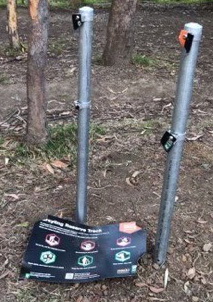 However, by July there were reports from neighbours of anti-social behaviour with older children harassing the younger ones, night time disturbance and dangerous riding in nearby streets. Trees were being damaged, some small Callicomas chopped down and dirt piled up against the Blackbutt at the entrance. Water was being taken from neighbouring properties. Creek crossings were being created interrupting the flow of the creek.
However, by July there were reports from neighbours of anti-social behaviour with older children harassing the younger ones, night time disturbance and dangerous riding in nearby streets. Trees were being damaged, some small Callicomas chopped down and dirt piled up against the Blackbutt at the entrance. Water was being taken from neighbouring properties. Creek crossings were being created interrupting the flow of the creek.
In response council placed temporary signs with stronger warnings in several locations around the site, for example:
Do not harm trees or plants or this track will be closed
Damage continued and the signs were pulled down so council closed the site and undertook a survey of the local community.
This site is not suitable for a bike park
STEP’s submission argued that this area should be a reserve, that is a quiet space for passive enjoyment for visitors and habitat for wildlife; not a highly disturbed play area. The area is not visible from the street and is too small to be a useful bike park.
In September council responded to the consultation feedback by deciding to close the build-and-ride park trial, saying the reasons were the various environmental and social issues. The announcement noted that signposted conditions of use had been repeatedly broken by users. Details are here: .
The West Pymble Facebook page erupted with comments expressing outrage at the removal of a valued facility. It seems the value had been abused. However there is a strong interest in the concept of a build-and-ride site.
Often it is the build aspect that is the most popular – sand pits for bigger kids? Council is looking for suggestions from the public of sites suitable for trials of the build-and-ride concept.
Fires and floods
Our Black Summer fires were closely followed by record rainfall and flooding. We were actually up in the Blue Mountains for a week in February 2020 when it virtually poured every day, accumulating more than 500 mm. Soil on steep slopes was either winnowed or swept away along with a mind boggling volume of charred debris. But outcomes from such a scenario can be even worse in a safety sense, as described in an article from The Atlantic Weekly (first published on 1 November in High Country News). I’ve reproduced a couple of paragraphs below.
Two Septembers ago, the residents of Grotto, Washington, woke to the Bolt Creek Fire ripping through the mountains above their homes … No one was hurt, and no houses burned. But now, wildfire survivors in Washington now face a new threat: debris flows. Wildfires can lessen the soil’s ability to absorb water, so when thunderstorms, rapid snowmelt, atmospheric rivers, or rain falling on snow occur in a burned area, that can create a roaring earthen river. Debris flows can move quickly — 30 mph or more — sliding from the uplands to the valley floor in a matter of minutes.
Debris flows are more dangerous than mudslides and slower-moving landslides: They can sweep away boulders, trees, and cars, and threaten everything in their path, including roads and homes and the people who live in them. Last year, in Washington’s Okanogan County, two residents were rescued from their home after earth flowed through a burn scar. Another flow destroyed a cabin and sent a foot of water and mud into at least 30 structures. And in 2018, 23 people were killed when heavy rains triggered a debris flow in the burn scar of Southern California’s Thomas Fire.
John Martyn came across this article in Apple News that’s very relevant for fires in our mountainous districts.
Biodiversity camp – Muogamarra Nature Reserve
‘What an amazing opportunity …’ was a student response overheard during a lunch conversation at the recent biodiversity survey held at Muogamarra Nature Reserve on 1 November 2023. Now in its second year, the biodiversity camp coordinated by Gibberagong Environmental Education Centre (GEEC) and the NSW National Parks and Wildlife Service provides an opportunity for students to learn about their local environment, fauna, wildlife survey techniques and careers in the environmental field.
GEEC staff, teachers and students were overjoyed by the support offered by our local community-based environmental organisation, STEP. STEP so willingly offered a grant to help financially support this important project. With living costs at a high, the grant provided by STEP helped us subsidise the cost of the experience to students, purchase ten pairs of binoculars and help pay for secondary teachers to attend.
Year 10 students from Ku-ring-gai HS and Turramurra HS were invited to apply for this opportunity. Upon meeting these students in the morning, one could immediately pick up on the passion and interest of these young people.
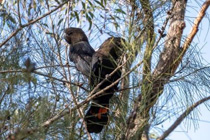 It was most disappointing for all involved to learn of a total fire ban on the Tuesday. This meant that all tracks were closed and our extensively planned overnight biodiversity camp could not run in the original format. Unfortunately, we could not do the overnight component. Due to the challenges in coordinating such events, were very lucky to proceed with a full day event on the Wednesday.
It was most disappointing for all involved to learn of a total fire ban on the Tuesday. This meant that all tracks were closed and our extensively planned overnight biodiversity camp could not run in the original format. Unfortunately, we could not do the overnight component. Due to the challenges in coordinating such events, were very lucky to proceed with a full day event on the Wednesday.
There was a silver lining in running a modified program. As we travelled into Muogamarra early in the morning we spotted two families of Glossy Black-Cockatoos. This was an amazing experience and opportunity for our students to observe this beautiful species feeding early in the morning on specific feed trees. It also provided our resident Glossy Black-Cockatoo expert and NPWS Chase Alive Volunteer, Barbara Hamilton with the opportunity to collect valuable observational data on these birds.
During the morning, the students were very fortunate to listen to two expert presentations. The first presentation was delivered by Kathy Potter from the Frog and Tadpole Study Group (FATS). Kathy so generously shared her expertise on local frog species, identification, habitats and how we can encourage frogs into our urban landscape.
This was then followed by an excellent presentation by Barbara Hamilton, Chase Alive Volunteer and local bird expert. Barbara spoke taught the students about local bird identification, evolutionary history of birds, bird distribution and how to attract a variety of birds to our home environments.
Armed with our fantastic binoculars, funded fully by STEP, we were set to conduct our survey walks. We listened and looked for all animals, especially birds. The students also collected the wildlife cameras that were set-up in the weeks prior to the survey.
 Unfortunately, we did observe a European Red Fox on the wildlife camera. This will be provided to the NSW National Parks and Wildlife Service for future management of the site.
Unfortunately, we did observe a European Red Fox on the wildlife camera. This will be provided to the NSW National Parks and Wildlife Service for future management of the site.
Despite the limitations on the surveys, we did manage to identify over twenty species of animals during the survey. This information will be provided back to NPWS. Ideally, we would like to have completed more surveys during the evening and very early morning.
The major benefit of this fieldwork is the seed that has been sown in our next generation. The students were overwhelming enthusiastic about learning about our local environments, especially our fauna. They felt more connected to their local environment and have left with not only more knowledge about fauna, habitats, and survey techniques. Most importantly, the students left with an even deeper passion and love for our natural environment. So much so, they are going to do follow-up fauna surveys at their own schools as well as present their learnings to their broader school community.
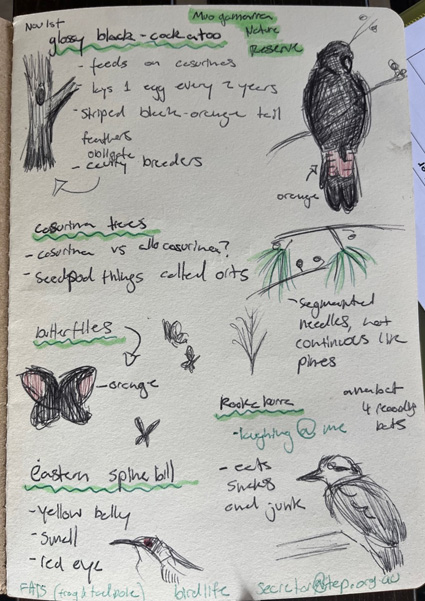
Gibberagong EEC would like to express our deepest gratitude to all involved – teachers and students, STEP, NPWS, Kathy and David Potter (FATS), Barbara Hamilton (Chase Alive) and Gibberagong staff.
Brad Crossman, Teacher, Gibberagong Environmental Education Centre
Spanish moss
Would you like to take part in our citizen science project?
STEP is becoming increasingly concerned about the potential impact of the introduced Spanish moss on our bushland and so we are trying to establish where it is and on what trees it is growing.
How you can help
Please send details of any Spanish moss you see growing on trees to Robin Buchanan (This email address is being protected from spambots. You need JavaScript enabled to view it.). Ideally:
- send a geotagged photo (you may have to enable location) OR details of the location (e.g. street, park, suburb); and
- if known, the name of the host tree (common name is fine)
Fire management guidelines: Eastern Pygmy Possum and Red-crowned Toadlet
Two threatened species, the Eastern Pygmy Possum and the Red-crowned Toadlet, are both listed as Vulnerable under the NSW Biodiversity Conservation Act 2016 and could be termed a ‘flagship’ species for biodiversity in Ku-ring-gai.
In the next few years some hazard reduction burns are planned in bushland which contains existing populations of both these species. As a result Mark Schuster (Ku-ring-gai Council’s Bushfire Technical Officer) has written two very detailed fire management guidelines to help maintain both habitat and viable populations when planning and implementing burns.
The Eastern Pygmy Possum is a small nocturnal marsupial, and in Ku-ring-gai its preferred habitat is either woodland or heath as it is highly dependent on flowering banksia species – particularly Banksia ericifolia.
The Red-crowned Toadlet is a small, distinctive frog found around temporary creeks and soaks in sandstone habitats in woodland, heathland and dry sclerophyll forest.
Click below to download the fire management guidelines for:
Good news on effective control of feral horse numbers
In the previous edition of STEP Matters there was an article about the NSW government’s proposal and consultation on reinstating aerial culling of feral horses in Kosciuszko National Park. In October there was the pleasing announcement that the ridiculous decades-old ban on aerial shooting of feral horses is to be repealed. The latest government survey of horse numbers has actually shown a small decrease of about 7%. There is a long way to go to get down to the target of about 3,000 from the current estimate of about 17,000 horses.
This decision throws a lifeline to more than 30 endangered species that call the Australian Alps home, including the southern corroboree frog and mountain pygmy possum. Our park rangers can now finally get on with the task of removing thousands of feral horses from our fragile alpine environments – before the mountains and rivers are trampled beyond repair.
Young Scientist Awards 2023
STEP has given a prize for environmental projects in the Science Teachers Association of NSW Young Scientists Awards for 22 years.
This year more than 800 students submitted projects, and STEP’s winner is Isabel Fisher from Roseville College. Her project investigated the effects that the presence of a mycorrhizal (fungal) network has on seed germination and growth for Acacia linifolia and Acacia ulcifolia.
The project showed that the fungal network had a positive impact. This finding could have a direct relevance to local bush regeneration methods.
Recent submissions: planning and Westleigh Park
The Upper House of the NSW parliament has been conducting an inquiry into how the planning system can be improved so that people, threatened species and the built environment are protected from the impact of climate change. Sue Higginson from The Greens is chairing the inquiry. The terms of reference were broad and provided an opportunity for individuals, local councils and community groups to comment using local examples of the long list of inadequacies of the system and the resulting environmental destruction. They make interesting reading!
The development application for Westleigh Park was open for submissions until 20 November. STEP’s criticisms of this large project have not been addressed so our submission drew largely from previous ones. Most of the more detailed ecological reports have many inadequacies so we consider that the development application should not be submitted to the Planning Panel until the missing details are covered. The basic problems that we have written about many times remain, namely the mountain bike trails, the use of synthetic turf and the serious and irreversible impacts on Sydney Turpentine Ironbark Forest.

